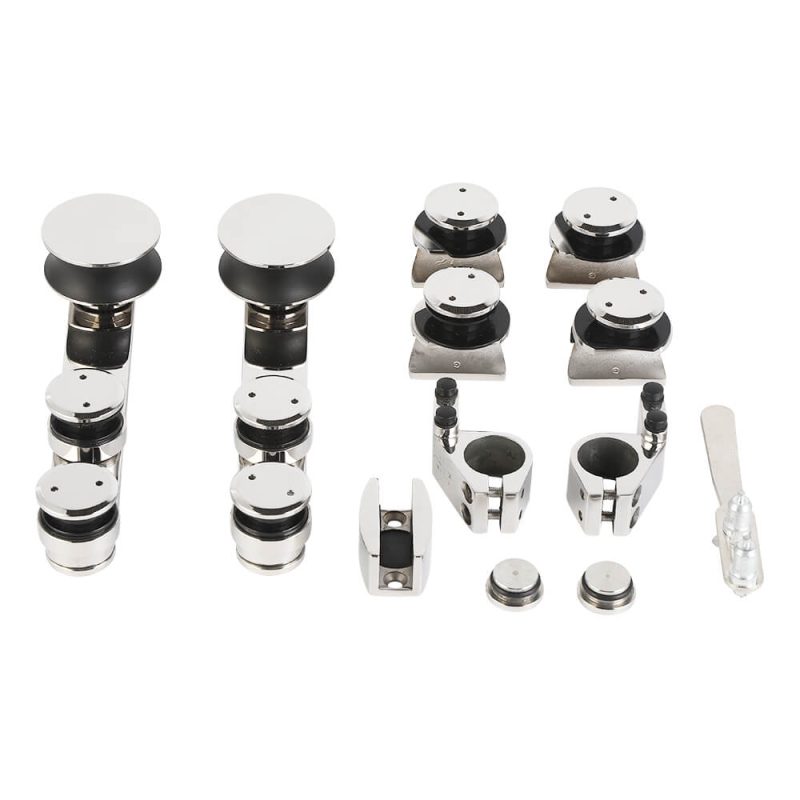The Environmental Impact of Bathroom Glass Door Hinges
Bathroom glass door hinges play a significant role in the overall environmental impact of a bathroom. The materials used, manufacturing processes, and disposal methods all contribute to their environmental footprint. This article aims to provide an in-depth analysis of the environmental consequences associated with bathroom glass door hinges, covering various aspects such as resource depletion, greenhouse gas emissions, and waste generation.
Resource Depletion
Bathroom glass door hinges primarily consist of metals, including stainless steel, brass, and aluminum. These materials are extracted from the Earth’s crust through mining, a process that can cause extensive land degradation, water pollution, and air pollution. The mining of metals also depletes finite natural resources, contributing to the overall environmental burden.
Greenhouse Gas Emissions
Manufacturing bathroom glass door hinges involves various processes that emit greenhouse gases, including casting, forging, and plating. These processes require significant amounts of energy, primarily from fossil fuels, which release carbon dioxide and other greenhouse gases into the atmosphere. The production and transportation of materials used in the hinges also contribute to greenhouse gas emissions, exacerbating climate change and its associated environmental threats.
Waste Generation
Bathroom glass door hinges have a limited lifespan and eventually require replacement. If not properly disposed of, discarded hinges can end up in landfills, where they can take decades or even centuries to decompose. Metals in particular do not biodegrade, contributing to the accumulation of waste and posing a threat to ecosystems. Improper disposal can also lead to the leaching of toxic materials into the environment, polluting soil and groundwater.
Embodied Energy
The embodied energy of bathroom glass door hinges refers to the total energy required to extract, process, manufacture, and transport the hinges. This energy is embedded in the materials used and the manufacturing processes involved. Embodied energy is a significant consideration in assessing the overall environmental impact of a product, as it accounts for the energy consumed throughout its lifecycle.
Sustainability Initiatives
Thankfully, there are growing initiatives aimed at reducing the environmental impact of bathroom glass door hinges. Manufacturers are exploring the use of sustainable materials, such as recycled metals, to minimize resource depletion and waste generation. Investments are also being made in energy-efficient manufacturing processes to reduce greenhouse gas emissions. Additionally, consumers can contribute to sustainability by choosing hinges made from environmentally friendly materials and properly disposing of them at the end of their useful life.
Conclusion
The environmental impact of bathroom glass door hinges should not be overlooked. By understanding the resource depletion, greenhouse gas emissions, waste generation, and embodied energy associated with hinges, manufacturers and consumers can work together to reduce the environmental footprint of bathrooms. Sustainable practices and choices can help mitigate environmental damage, preserve natural resources, and protect the planet for future generations.
-
What Is a Shower Door Wall Bracket and Why Is It Essential for a Secure Bathroom Installation?
16-12-2025 -
What is the maximum weight that frameless shower door clips can support?
11-12-2025 -
Shower Glass Clips Hardware: The Ultimate Guide to Choosing, Installing, and Maintaining
05-12-2025 -
What Are the Different Types of Shower Screen Glass Clamps and How to Choose?
26-11-2025 -
Clip-On Shower Door vs. Traditional Hinges: Which Is Better?
21-11-2025
-
What are frameless shower clamps and why are they essential for modern bathrooms?
19-12-2025 -
What Makes the Ideal Wall Bracket for Your Glass Shower Screen?
18-12-2025 -
Is a Clip Lock for Door the Smartest Way to Improve Everyday Home Security?
17-12-2025 -
What Are the Best Clips for Shower Glass and How Do You Choose the Right Ones?
16-12-2025 -
What safety standards should stainless steel glass shower screen wall brackets comply with?
15-12-2025











